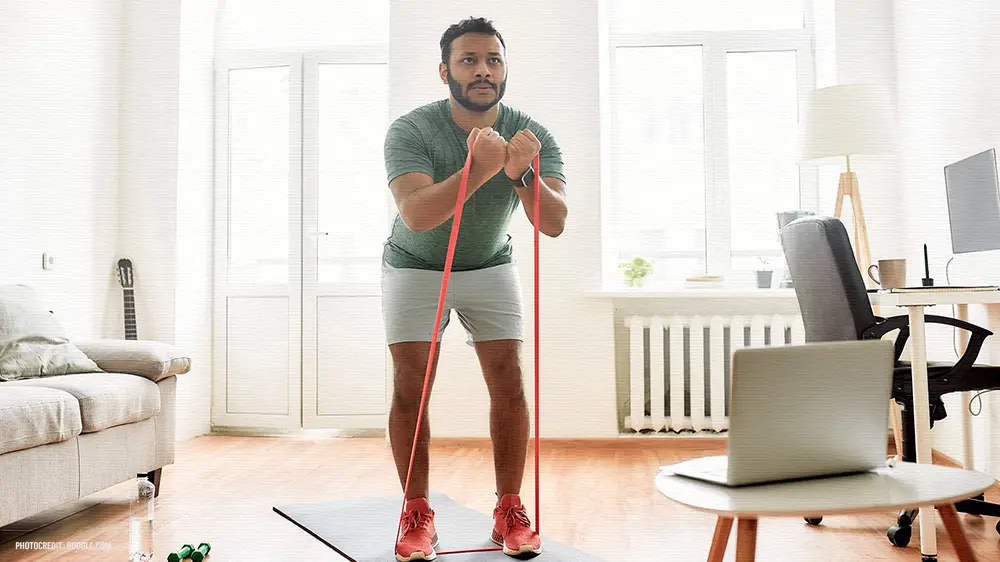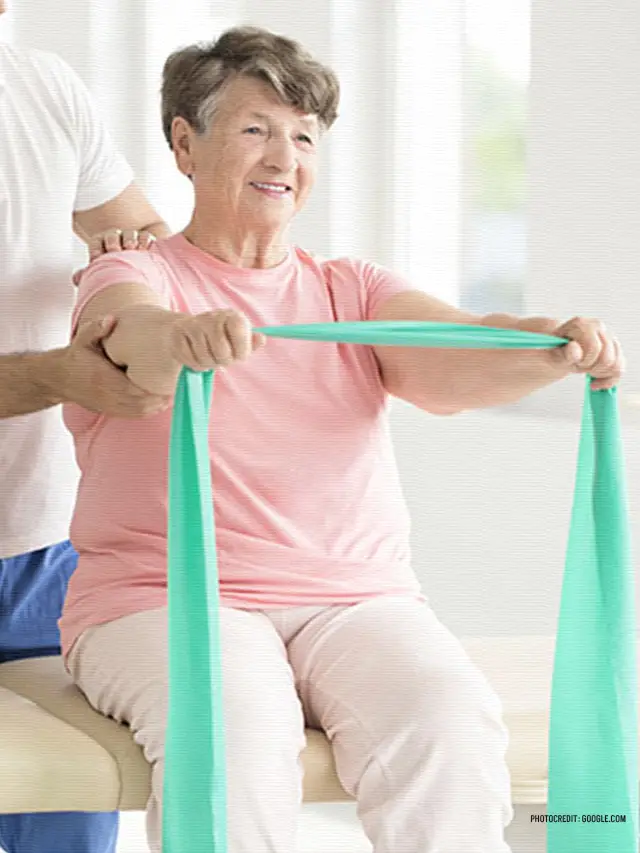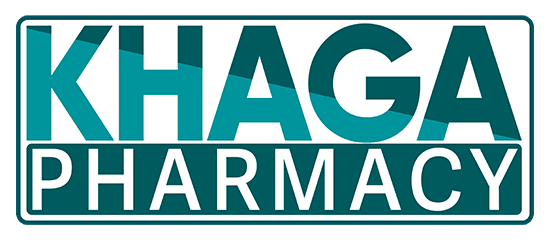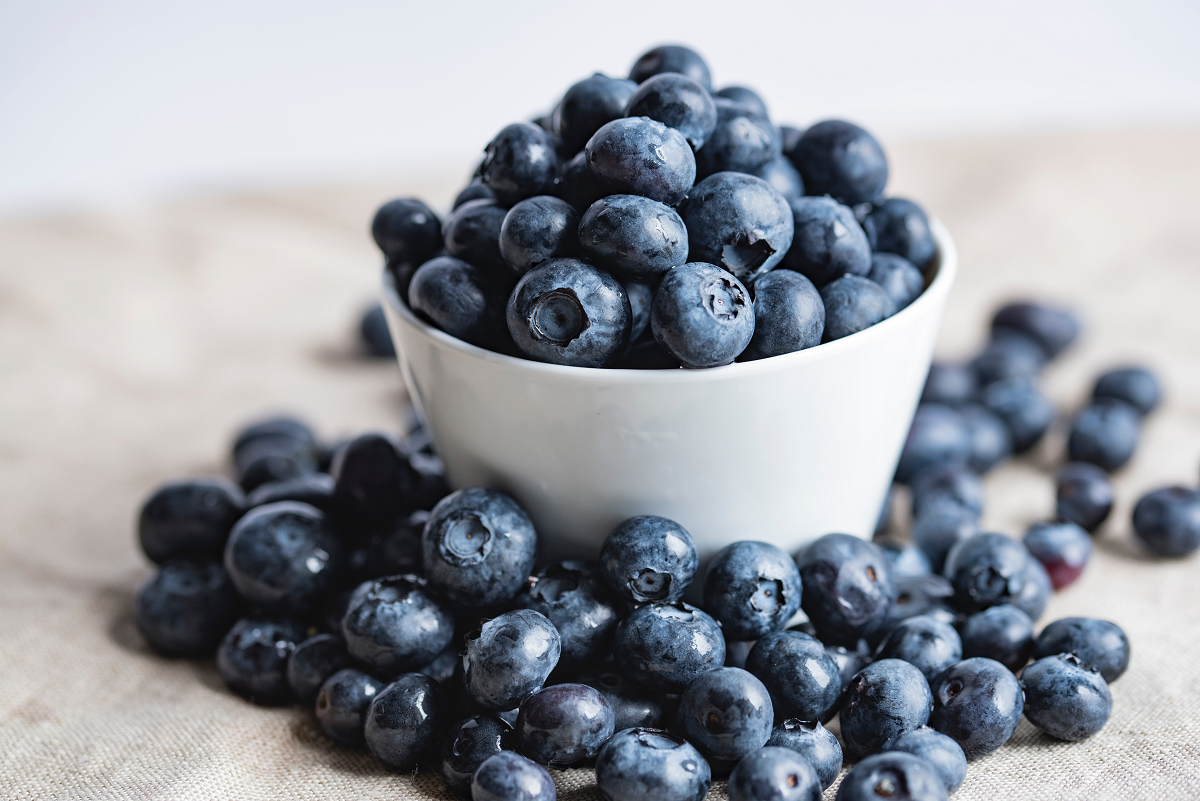
HEALTH BLOG
Physical Therapy at Home: Benifits, Types, Tips and Tools
-
Rahul Priydarss
Discover the benefits, types, tips, and tools for physical therapy at home. Learn how home-based physical therapy can improve mobility, strength, and overall well-being. Find out about the different types of exercises, equipment needed, and practical tips for creating an effective home physical therapy routine. Whether you’re recovering from an injury, managing a chronic condition, or simply seeking to improve your fitness, home physical therapy offers a convenient and personalized approach to rehabilitation.
Introduction to Physical Therapy at Home:
Physical therapy, often referred to as PT, is a crucial aspect of rehabilitation and recovery for individuals with various injuries, illnesses, or conditions affecting their mobility and functionality. While traditional physical therapy sessions are conducted in clinical settings under the supervision of trained professionals, there’s an increasing recognition of the benefits of incorporating physical therapy exercises and techniques into daily routines at home.
Home-based physical therapy not only enhances convenience but also promotes continuity of care and empowers individuals to take an active role in their recovery process.

Table of Contents
Benefits of Physical Therapy at Home:
Physical therapy at home offers numerous advantages for individuals seeking rehabilitation and recovery.
Convenience: Physical therapy at home eliminates the need for frequent visits to a clinic, saving time and reducing transportation costs. Individuals can schedule sessions at their convenience, fitting them into their daily routines without disrupting other commitments.
Personalized Care: Home-based physical therapy allows for tailored interventions that address the individual’s specific needs and goals. With one-on-one attention from a physical therapist, treatment plans can be adjusted in real-time to optimize effectiveness and promote faster recovery.
Comfort and Familiarity: Being in a familiar environment can enhance comfort levels and alleviate anxiety associated with clinical settings. This comfortable setting fosters a relaxed atmosphere conducive to rehabilitation, ultimately promoting better outcomes.
Independence and Empowerment: Participating in physical therapy at home empowers individuals to take an active role in their recovery journey. By learning exercises and techniques they can perform independently, individuals gain confidence and a sense of control over their rehabilitation process.
Continuity of Care: Home-based physical therapy promotes continuity of care by seamlessly integrating rehabilitation into daily life. This ensures consistency in treatment, which is crucial for achieving and maintaining progress over time.
Cost-Effectiveness: Home-based physical therapy can be more cost-effective than traditional clinic-based therapy, as it eliminates overhead costs associated with clinic visits. Additionally, it may reduce indirect costs such as transportation expenses and time away from work.
Family Involvement: Home-based physical therapy provides an opportunity for family members to actively participate in the rehabilitation process. By involving loved ones, individuals receive additional support and encouragement, which can positively impact their recovery.
Improved Compliance: With physical therapy delivered in the comfort of their own home, individuals are more likely to adhere to their prescribed exercise regimen. This improved compliance contributes to better outcomes and faster progress in rehabilitation.
Types of Physical Therapy at Home Exercises:
Physical therapy exercises are designed to improve strength, flexibility, balance, and overall mobility. Some common types of exercises include.
Stretching Exercises: Stretching exercises help improve flexibility and range of motion in joints and muscles. They can target specific muscle groups or encompass full-body stretches to alleviate stiffness and enhance mobility.
Strengthening Exercises: Strengthening exercises focus on building muscle strength and endurance. These exercises often involve resistance training using body weight, resistance bands, or weights to target specific muscle groups and improve overall functional capacity.
Balance and Coordination Exercises: Balance and coordination exercises aim to enhance stability, proprioception, and coordination, reducing the risk of falls and improving mobility. Examples include standing on one leg, walking heel-to-toe, and using balance boards or stability balls.
Cardiovascular Exercises: Cardiovascular exercises, such as walking, cycling, or swimming, increase heart rate and improve cardiovascular fitness. These exercises promote endurance, circulation, and overall cardiovascular health, contributing to improved stamina and energy levels.
Functional Mobility Exercises: Functional mobility exercises mimic activities of daily living and focus on improving movement patterns essential for performing everyday tasks. Examples include squatting, lifting, reaching, and bending to promote independence and functional capacity.
Postural Correction Exercises: Postural correction exercises target imbalances and weaknesses in posture, aiming to improve alignment and reduce strain on the musculoskeletal system. These exercises focus on strengthening core muscles, improving posture awareness, and promoting ergonomic principles.
Proprioceptive Neuromuscular Facilitation (PNF) Exercises: PNF exercises involve patterns of movement combined with resistance to improve flexibility, strength, and coordination. These exercises often use diagonal patterns of movement and are beneficial for rehabilitation following injury or surgery.
Plyometric Exercises: Plyometric exercises involve rapid, explosive movements to improve power, agility, and coordination. These exercises enhance neuromuscular control and are commonly used in sports-specific rehabilitation and performance training.
Aquatic Therapy Exercises: Aquatic therapy exercises are performed in water and utilize buoyancy and resistance to support rehabilitation efforts. Water-based exercises are particularly beneficial for individuals with joint pain, arthritis, or mobility limitations, as they provide low-impact conditioning and support.
Breathing and Relaxation Exercises: Breathing and relaxation exercises focus on diaphragmatic breathing, deep breathing techniques, and relaxation strategies to reduce stress, tension, and promote relaxation. These exercises are beneficial for managing pain, improving sleep quality, and enhancing overall well-being.
Tools for Home Physical Therapy:
While many physical therapy exercises can be performed using just the body’s resistance, certain tools and equipment can enhance the effectiveness of home-based therapy. Some commonly used equipment includes.
Resistance Bands: Resistance bands are versatile and portable tools used to add resistance to exercises, aiding in strength training and muscle rehabilitation. They come in various resistance levels to accommodate different fitness levels and can be used for upper and lower body exercises.
Exercise Balls (Stability Balls): Exercise balls are large inflatable balls used for stability training, core strengthening, and balance exercises. They can help improve posture, stability, and proprioception, and are commonly used in physical therapy for rehabilitation and injury prevention.
Foam Rollers: Foam rollers are cylindrical tools used for self-myofascial release (SMR) to alleviate muscle tension, improve flexibility, and promote recovery. They can be used to target specific muscle groups and are particularly beneficial for individuals with tight muscles or trigger points.
Balance Boards: Balance boards are devices designed to challenge balance and proprioception, helping improve stability and coordination. They can be used for standing exercises, weight shifting drills, and rehabilitation of ankle and lower extremity injuries.
Hand Weights or Dumbbells: Hand weights or dumbbells are essential tools for strength training exercises targeting the upper body, including the arms, shoulders, and chest. They come in various weights and can be used to progressively increase resistance as strength improves.
Theraband Loops: Theraband loops are elastic bands in a closed-loop design, providing resistance for lower body exercises such as leg lifts, squats, and hip abduction/adduction. They are convenient for home use and come in different resistance levels to accommodate varying strength levels.
Balance Cushions or Discs: Balance cushions or discs are inflatable or foam-based tools that challenge balance and stability, particularly for seated or standing exercises. They can be used to improve core strength, posture, and proprioception, and are suitable for individuals of all fitness levels.
Foam Blocks or Yoga Blocks: Foam blocks or yoga blocks are supportive props used to modify and enhance yoga poses or stretching exercises. They provide stability and assistance for individuals with limited flexibility or range of motion, facilitating proper alignment and posture.
Pedometers or Activity Trackers: Pedometers or activity trackers monitor daily activity levels, including steps taken, distance traveled, and calories burned. They can serve as motivational tools to encourage physical activity and track progress toward fitness and rehabilitation goals.
Exercise Mats: Exercise mats provide cushioning and support for floor-based exercises, stretching, and yoga routines. They create a comfortable surface for exercise and help prevent slipping or injury during workouts at home.

Tips for Making Physical Therapy at Home:
By following these tips, you can create a safe, effective, and sustainable home physical therapy routine that supports your rehabilitation goals and promotes overall health and well-being.
Consult with a Physical Therapist: Before starting a home physical therapy routine, consult with a licensed physical therapist to assess your condition, establish goals, and receive personalized recommendations for exercises and interventions.
Set Realistic Goals: Define clear and achievable goals for your home physical therapy routine, such as improving flexibility, strength, mobility, or reducing pain. Break larger goals into smaller, manageable steps to track progress effectively.
Establish a Consistent Schedule: Establish a regular schedule for your home physical therapy sessions, incorporating them into your daily routine at times when you’re most likely to be able to commit fully to the exercises.
Warm-Up and Cool Down: Begin each session with a gentle warm-up to increase blood flow to muscles and prepare the body for exercise. Similarly, conclude each session with a cool-down period to gradually lower heart rate and prevent muscle soreness.
Focus on Proper Form and Technique: Pay close attention to proper form and technique during exercises to maximize effectiveness and minimize the risk of injury. Follow the guidance provided by your physical therapist and seek feedback if needed.
Gradually Progress Intensity: Start with exercises that match your current fitness level and gradually increase intensity, duration, or resistance as your strength and endurance improve. Avoid progressing too quickly to prevent overexertion or strain.
Incorporate Variety: Keep your home physical therapy routine engaging and effective by incorporating a variety of exercises that target different muscle groups and movement patterns. This prevents boredom and ensures balanced muscular development.
Listen to Your Body: Pay attention to your body’s signals during exercise and adjust intensity or technique accordingly. If you experience pain or discomfort beyond normal muscle fatigue, stop the exercise and consult your physical therapist.
Stay Hydrated and Rest: Stay hydrated before, during, and after your home physical therapy sessions to support muscle function and recovery. Allow adequate time for rest and recovery between sessions to prevent overtraining and promote recovery.
Track Progress and Adjust as Needed: Keep a journal or use a mobile app to track your progress, including exercises performed, sets, repetitions, and any changes in symptoms or functional abilities. Use this information to adjust your home physical therapy routine as needed and celebrate milestones along the way.
Examples of Physical Therapy at Home:
Here are some examples of simple yet effective exercises that can be done at home.
Standing Hamstring Stretch:
- Stand with one foot elevated on a low surface, keeping the knee straight.
- Lean forward from the hips, reaching towards the elevated foot until you feel a gentle stretch in the back of the thigh.
- Hold the stretch for 20-30 seconds and then switch legs.
Wall Push-Ups:
- Stand facing a wall with your arms extended and hands flat against the wall at shoulder height.
- Lower your chest towards the wall by bending your elbows, keeping your body straight.
- Push back to the starting position by straightening your arms. Repeat for 10-15 repetitions.
Seated Leg Raises:
- Sit on a chair with your feet flat on the floor and your back straight.
- Lift one leg off the floor, extending it straight out in front of you.
- Hold for a few seconds, then lower the leg back down. Repeat on the opposite side.
- Perform 10-15 repetitions on each leg.
Bridges:
- Lie on your back with your knees bent and feet flat on the floor, hip-width apart.
- Press through your heels to lift your hips towards the ceiling, forming a straight line from shoulders to knees.
- Squeeze your glutes at the top, then lower your hips back down. Repeat for 10-15 repetitions.
Standing Calf Raises:
- Stand with your feet hip-width apart, holding onto a stable surface for support if needed.
- Rise up onto the balls of your feet, lifting your heels as high as possible.
- Hold for a moment, then lower your heels back down. Repeat for 10-15 repetitions.
Seated Marching:
- Sit on the edge of a chair with your feet flat on the floor.
- Lift one knee towards your chest, then lower it back down.
- Alternate legs, marching in place for 20-30 seconds.
Shoulder Blade Squeezes:
- Sit or stand with your arms by your sides.
- Squeeze your shoulder blades together, bringing them towards each other.
- Hold for a few seconds, then relax. Repeat for 10-15 repetitions.
Ankle Alphabet:
- Sit on a chair with one leg extended in front of you and the other foot flat on the floor.
- Trace the letters of the alphabet with your toes, moving your ankle through its full range of motion.
- Repeat with the opposite foot.
Testimonials for Physical Therapy at Home:
“I can’t thank my physical therapist enough for introducing me to home-based therapy. Being able to do my exercises in the comfort of my own home has made such a difference in my recovery. It’s convenient, personalized, and has given me the confidence to take control of my rehabilitation journey.”
“Home physical therapy has been a game-changer for me. After struggling to keep up with clinic appointments due to my busy schedule, I decided to try therapy at home. Not only has it saved me time and money, but it’s also allowed me to be consistent with my exercises. I’ve seen significant improvements in my mobility and strength, and I couldn’t be happier.”
“As someone who was initially skeptical about the effectiveness of home physical therapy, I can honestly say it exceeded my expectations. My therapist tailored a program specifically for me, and with their guidance and support, I’ve been able to make steady progress from the comfort of my living room. It’s been empowering to take charge of my recovery and see tangible results.”
“After undergoing surgery, I was hesitant about starting physical therapy. However, my therapist recommended home-based sessions, and I’m so glad I followed their advice. Not only has it been convenient, but it’s also helped me regain strength and mobility faster than I anticipated. I highly recommend home physical therapy to anyone going through a similar journey.”
“Home physical therapy has been a lifeline for me during the pandemic. With restrictions on clinic visits, I was worried about maintaining my progress. Thankfully, my therapist seamlessly transitioned my sessions to virtual appointments, guiding me through exercises via video calls. It’s been incredibly effective, and I’m grateful for the continued support and encouragement.”
FAQs about Physical Therapy at Home:
A1: While some exercises may be safe to perform independently, it’s advisable to consult with a physical therapist to ensure proper technique and to receive personalized recommendations based on your specific needs and condition.
A2: While certain tools like resistance bands and stability balls can enhance your home physical therapy routine, many exercises can be performed using just your body weight. Your therapist can recommend suitable equipment based on your goals and abilities.
A3: The frequency of your home physical therapy sessions will depend on your individual treatment plan and goals. Your therapist will provide guidance on the recommended frequency and duration of exercises to achieve optimal results.
A4: Yes, home physical therapy can be an effective component of a comprehensive pain management plan. By improving strength, flexibility, and mobility, physical therapy exercises can help reduce pain levels and improve overall quality of life.
A5: If you experience any discomfort or pain during or after performing exercises, stop the activity and consult with your therapist. Adjustments to your technique, intensity, or exercise selection may be necessary to ensure safe and effective rehabilitation.

-Please remember, to always consult with healthcare professionals or Doctors for personalised advice related to medical conditions.
Conclusion:
In conclusion, home-based physical therapy offers a range of benefits, including convenience, personalized care, and cost-effectiveness. By incorporating various exercises and utilising appropriate tools, individuals can improve their mobility, strength, and overall well-being from the comfort of their own home. With proper guidance and consistency, home physical therapy can empower individuals to take control of their rehabilitation journey and achieve meaningful progress in their recovery.




